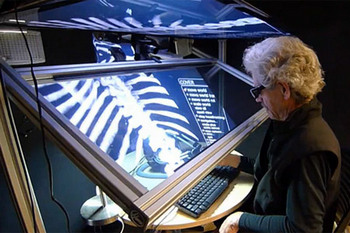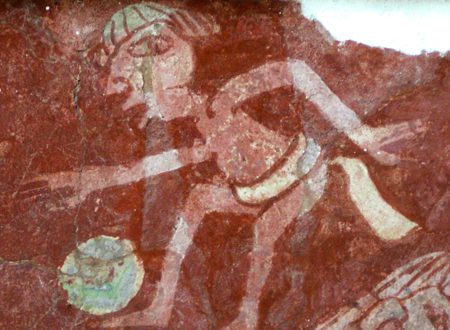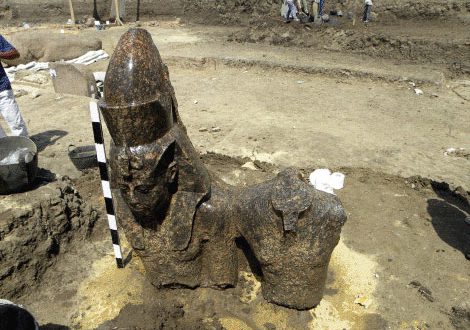 The Arts and Humanities Research Council (AHRC) have today released video footage of the newest Henge discovered in Britain, at the River Avon and less than a mile away from the world most famous stone circle. Bluestonehenge (or Bluehenge as it was originally called by the press) was named after the famous Welsh blue stones that are also incorporated – or maybe even reused – in the nearby Stonehenge. Dr Josh Pollard, co-director of the research project, explained: “This is an incredible discovery. The newly-discovered circle and henge should be considered an integral part of Stonehenge rather than a separate monument. Furthermore, it offers tremendous insight into the history of its famous neighbour. Its riverside location demonstrates once again the importance of the River Avon in Neolithic funerary rites and ceremonies.”
The Arts and Humanities Research Council (AHRC) have today released video footage of the newest Henge discovered in Britain, at the River Avon and less than a mile away from the world most famous stone circle. Bluestonehenge (or Bluehenge as it was originally called by the press) was named after the famous Welsh blue stones that are also incorporated – or maybe even reused – in the nearby Stonehenge. Dr Josh Pollard, co-director of the research project, explained: “This is an incredible discovery. The newly-discovered circle and henge should be considered an integral part of Stonehenge rather than a separate monument. Furthermore, it offers tremendous insight into the history of its famous neighbour. Its riverside location demonstrates once again the importance of the River Avon in Neolithic funerary rites and ceremonies.”
This video was filmed in September 2009 on – AHRCfunded – dig site in Wiltshire, where Professor Mike Parker Pearson and Dr Kate Welham were interviewed. In the video we see footage of the excavations itself as well as archaeologists executing a geophysical survey.
VIDEO: BLUESTONEHENGE EXCAVATIONS
The newly discovered circle is 10m in diameter and was surrounded by a henge – a ditch with an external bank. The circle that probably consisted of 25 stones – no longer present – would have marked the end of the Avenue, a 2.8 km processional route that leads from the River Avon to Stonehenge, which was constructed at the end of the Stone Age (the Neolithic period). The outer henge around the stones was built around 2400 BC, but arrowheads found in the circle indicate the stones were erected as much as 500 years earlier. Most of the circle remains unexcavated, preserved for future research, whilst the 2009 excavation has now been filled back in, but this does not seem to stop the druids from ‘partying’ at the site.
The stones from the new-found circle were removed thousands of years ago but the sizes of the holes in which they stood indicate that this was a circle of bluestones that were brought from the Preseli mountains of Wales 150 miles away, like the inner stones at Stonehenge. When the stones from the newly-discovered circle were removed by Neolithic people, it is possible that they were dragged along the route of the Avenue to Stonehenge, to be incorporated within its major phase of rebuilding around 2500 BC; some of the bluestones that once stood at the riverside probably now stand within the centre of Stonehenge.
The builders of the stone circle used deer antlers as pickaxes. Within the next few months, radiocarbon dating of these antler picks will provide more precise dates and reveal whether the circle was built at the same time as Stonehenge itself (in the decades after 3000 BC) or at some other time.
Stonehenge and the ‘new’ Bluestonehenge are definitely not the only stone circles in Britain. Curious about the others? We’ve mapped them out for you.



